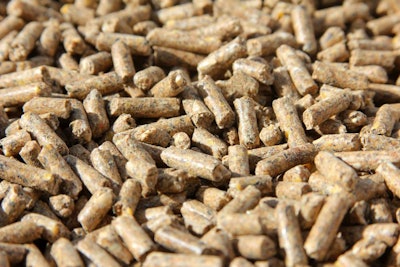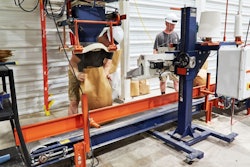
New testing methodology detects tiny microplastic fragments in a dozen animal feed samples
A pilot study intended to apply a new methodology for detecting microplastics found the microscopic plastic fragments in nearly every feed product it sampled, according to a report by Vrije Universiteit Amsterdam and commissioned by the Plastic Soup Foundation.
The study detected multiple kinds of plastic in nine samples of pelleted feed intended for either cows or pigs, and in two samples of shredded feed products. Some of the samples found to contain microplastics were marketed as organic.
Five samples of fresh feed products did not contain detectable microplastics, a finding that is consistent with research in human food products that indicates microplastics are more commonly found in processed food than in unprocessed food, according to Heather Leslie, one of the authors of the study.
“When the farmers bought fresh beets and potatoes from their neighbors, that seemed to not be the problem,” Leslie said. “In our pilot study, the problem seemed to be, the more processed the food is, the higher the chances of detecting microplastics. That’s what we see in the human food system when food is processed — it’s packaged and mixed and transported, and all these different steps are opportunities for plastics to be introduced into the system.”
The study also screened milk and meat products, as well as blood from livestock, for the presence of microplastics and found plastic in the majority of samples. The study did not evaluate how the plastics came to be present in any of the samples tested.
Research has established that microplastics are common contaminants in soils and waterways worldwide. Microplastics are also frequently found in fish and seafood products. It is not yet certain whether the presence of microscopic plastic fragments pose a health threat to humans or animals, though emerging research shows that microplastics can damage and kill human cells.
Prior studies have mostly counted plastic particles using microscopes, or even laser-based spectrosopy technologies, Leslie said. This most recent study, Leslie said, applied mass spectrometry to measure the total mass of microplastics per plastic type in a sample, without counting particles. The research team was particularly interested in looking for microplastics in animal feed, but after their recent discovery of microplastic in the human bloodstream, also decided to collect samples of animal blood, milk and, if available, meat, while visiting farms.
“In all our other studies, wherever we’ve looked for plastic, we could usually find it,” Leslie said. “Many years ago, using different techniques that weren’t as sophisticated as what we used for this study, we could find plastic in samples from supermarkets. Beer and honey were just a kaleidoscope of brightly colored specks when you look at them close up under a microscope.”
While not comprehensive, Leslie said the study points to a need for further research on the presence of microplastics in animal feed.















